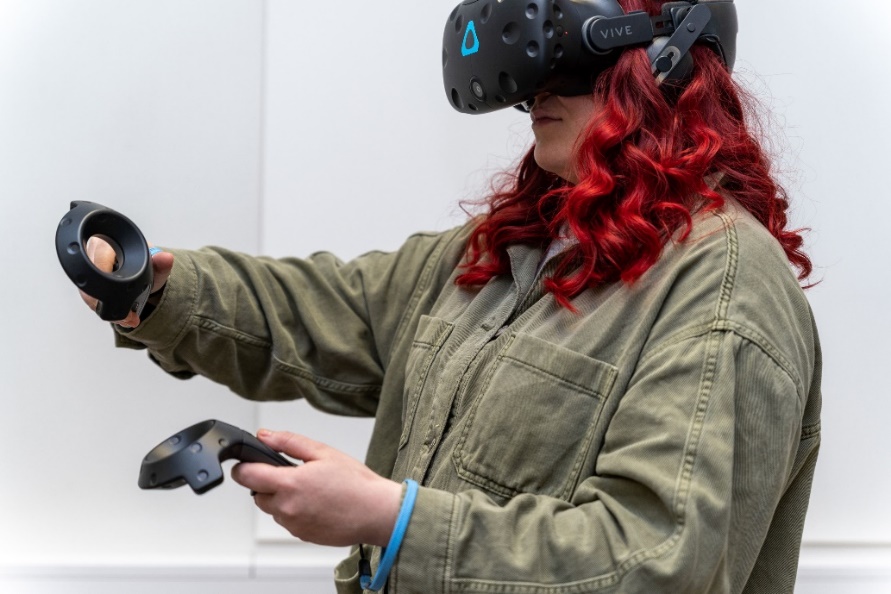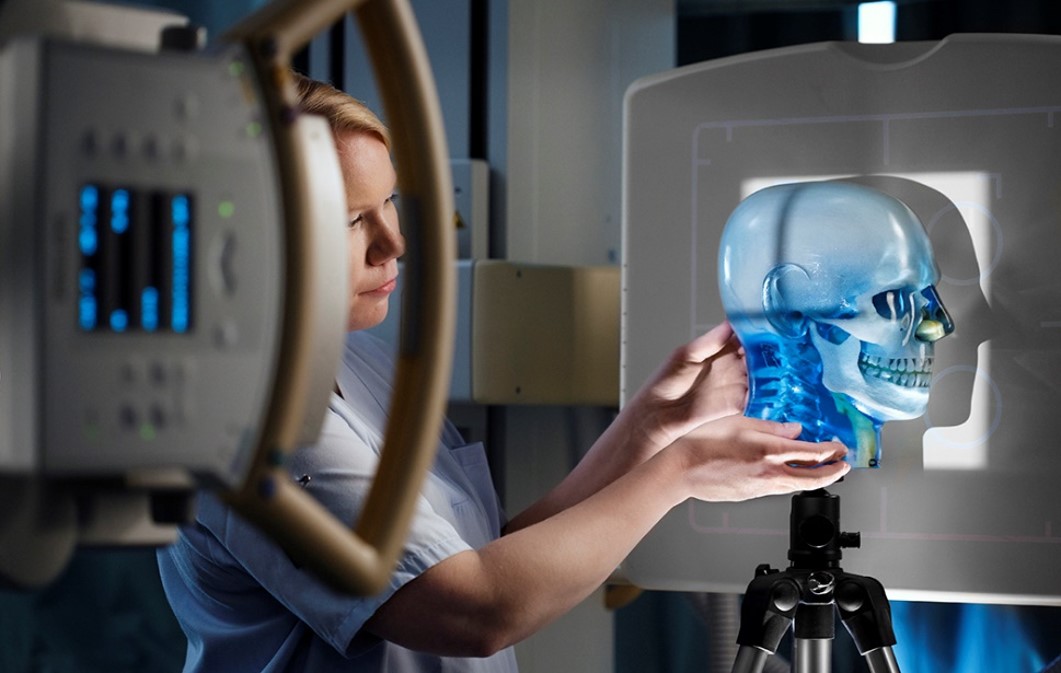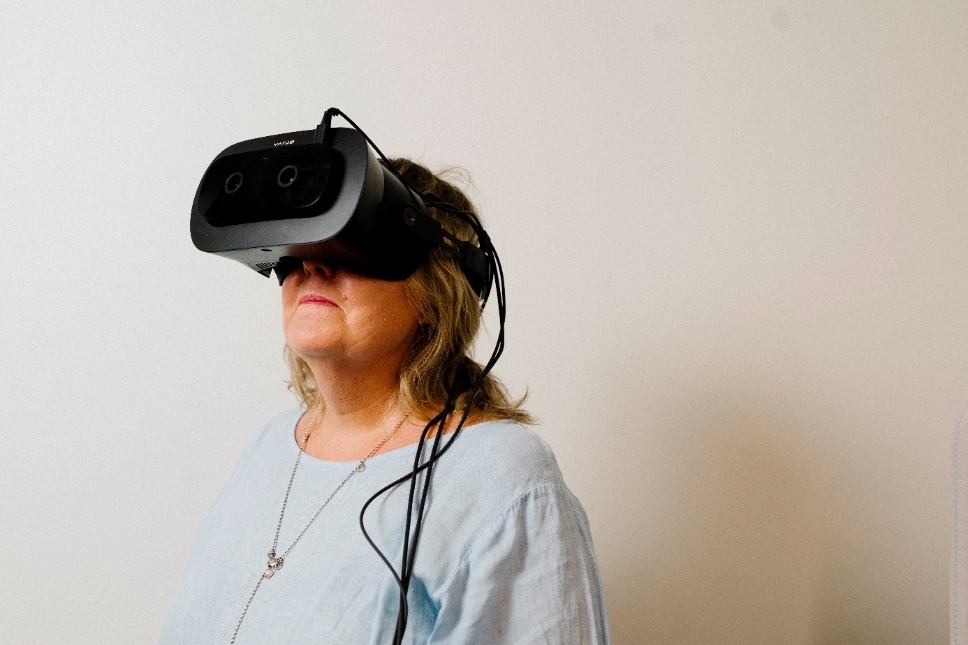Module 3
Gender Issues and Career Planning
Short description
In an ideal world, everyone would have the freedom to shape their future and career based on their dreams and abilities. However, society, culture, and communities close to us also influence our career paths. Unseen stereotypes and norms in society and various background factors, such as gender, ethnic background, and socioeconomic status, subtly guide our choices. Gender, in particular, is a clear predictor of an individual’s career path. Gender segregation refers to the differentiation of jobs, tasks, and fields of study into women’s and men’s jobs and fields and it is one of the key factors hindering gender equality in Europe.
This module delves into the profound impact of gender on career choices and the consequences of gender segregation. We approach this theme from five different perspectives. Firstly, we examine the underrepresentation of women in STEM fields (= Science, Technology, Engineering, and Mathematics) and the societal impacts of gender segregation. We then explore the formation of gender-related stereotypes, their influence on career path selection, and the challenges women in STEM fields may face.
Finally, we focus on career guidance, exploring how unconscious biases can affect counsellors and guidance they offer. We discuss practical actions a career counselor can take to encourage everyone to find their true potential and a suitable field for themselves, regardless of gender.
Underrepresentation of women in STEM fields and the importance of promoting gender equality in STEM careers.

In the last ten years, the proportion of women and men completing university degrees in Europe has consistently risen, gradually narrowing the gender gap in favour of women. In 2010, 20% of women and 21% of men held tertiary qualifications. By 2018, more women than men in the 15-and-older age group had graduated from university (26% of women compared to 25% of men). (Gender Equality Index 2020). In 2017, approximately 43% of female university students were enrolled in fields related to education, health, welfare, humanities, or the arts. Meanwhile, a majority of male students pursued STEM-studies. This division is also reflected in the labor market. (Gender Equality Index 2020). The situation varies in individual countries. Even though "on average" in the European Union, women are underrepresented in STEM, there are countries where they constitute the majority of engineers and scientists. There are also fields, for example biology, where women have been the majority since the 1970s.
The most female scientists and engineers are in Lithuania: 52%. In Denmark, Bulgaria, Portugal and Latvia they constitute 51%. The lowest rates can be found in Finland 31%. In Hungary 33% and in Italy 34%. When it comes to individual sectors, in services, women scientists and engineers constitute 46% of employees. In the aviation sector they constitute 28%. The smallest percentage, only 8%, works in the water transport sector. When it comes to roles in typical technology and IT companies, 46% of women are employed in product design and management. However, they are missing in positions closely related to calculations - they constitute only 15% and in DevOps 8%. (Eurostat 2023).
So, statistically women will soon outpace men in educational attainment. Why then should we pay close attention to the gender segregation of study and working fields? In short, according to Gender Equality Index 2022, gender segregation continues to hinder gender equality in Europe. It affects women’s earnings, career prospects and working conditions. This is important because we are on the verge of a cultural crisis - technologies are playing an increasingly important role, which will significantly change the labour market in the near future. STEM professions will become more desirable and, therefore, better paid. The trend emphasizing digital economy and STEM fields may contribute to deepening societal inequality.
Next, we will be taking a closer look at how gender segregation and notably underrepresentation of women in STEM fields shape our economy and affect the lives of individuals.
Labor shortage
Gender segregation leads to imbalances in the workforce, resulting in shortages of qualified employees in certain fields and an oversupply in others. A 2018 study by the European Commission found that if more women were to participate in digital job markets, it could potentially generate an annual GDP income of €16 billion for the European economy. (Women in Digital / Shaping Europe’s digital future (europa.eu). The European economy experiences an annual loss of more than 2% in potential productivity due to the discrepancy between the skills available in the workforce and the skills demanded by employers. This issue is expected to worsen as demographic shifts and technological advancements continue. (Gender Equality Index 2020).
At the moment companies in ICT-sector struggle to fill open positions due to applicants’ lack of relevant work experience or suitable qualifications. While the labour shortage continues to hinder business operations, at the same time a lot of people remain unemployed or temporarily laid off. The primary reason for the labour-market mismatch, from the perspective of businesses, is incompatible qualifications.
Product Development
Gender segregation also has a significant effect on the product development and innovation. When services and products are designed only by one group of people, the needs of different users and target groups are easily overlooked. The underrepresentation of gender diversity in the science and technology workforce, particularly in sectors focused on digital technologies, has been linked to the perpetuation of explicit and implicit gender biases within digital services and products. Research indicates that needs of users whose characteristics (gender/age/disability) match those of the design team tend to be best served by the software. Here are some examples of how male-dominance of STEM-fields has impacted product development:
- Phones are often designed to fit the size of a man’s hand
- Speech recognition and voice control work better with men’s voices
- Crash test dummies used in car safety tests resemble average male bodies
- Activity trackers and health monitoring apps do not take into account hormonal fluctuations caused by the menstrual cycle
- Artificial intelligence used in hiring or pre-employment assessments mirrors gender bias in society
Social inequality
As stated before, gender segregation affects women’s earnings, career prospects and working conditions. Even though women are attaining more higher education, the employment rate of women is still significantly below that of men. Women also tend to be found more often in temporary, part-time or precarious employment. This contributes to significant gender gaps in pay and pensions.
There are often societal reasons for the development of gender segregation. Due to the gender pay gap, it is usually more profitable for the families to have the woman stay at home with the children as in all EU member countries women earn less than men. (Eurostats, 2018). Traditionally women have been considered ‘naturally’ more suitable for jobs related to healthcare and teaching. Typically, these occupational fields are low income in comparison to male dominated occupations.
Reflect: What effects of gender segregation have you noticed in your own life and immediate environment:
- In which fields do people in your close circle study and work? Are people of the same gender in the same fields?
- Have you noticed examples of how certain services and different technologies work better for a certain gender?
How gender roles and stereotypes are learned and reinforced in society and how they affect career choices

Stereotypes are preconceived, usually generalized views about how members of a certain group do or should behave, or which traits they do or should have. A lot of times stereotypes we have are subliminal and unrecognizable so we might not even be aware of them. They are based on ingrained biases and social norms within a society. Stereotypes can be harmful by causing unequal treatment of people. Gender stereotypes are ideas about how individuals of a particular gender should act or behave. These beliefs can place limits on the acceptable choices and actions of people and can affect self-perception, wellbeing, attitudes, and participation in a wide range of settings. Gender stereotypes oversimplify and generalize, often reflecting binary notions of masculinity and femininity. In modern society, gender as a social category is so self-evident that we often do not even notice how it impacts us and everyone around us.
It is widely believed that one of the key factors behind gender segregation are the stereotypical perceptions of genders and suitable professions for different genders. From an early age, young people absorb societal stereotypes about suitable interests for men and women. Children and adolescents are provided with constant messages on what is considered appropriate and desirable for different genders through the different role models they witness and the toys and games they are taught to play with. Acting against gender stereotypes can lead to sanctions: One can be left outside of social groups, bullied, and discriminated against. Boys acting in a way that is perceived as feminine and girls acting “boyish” is scrutinized by their peers and by adults as well. Thus, acting according to gender stereotypes might feel safer and more socially accepted.
Exercise: Here are two short videos highlighting gender stereotypes:
- Girl toys vs boy toys: The experiment - BBC Stories (2017): https://youtu.be/nWu44AqF0iI
- A Class That Turned Around Kids' Assumptions of Gender Roles! https://youtu.be/G3Aweo-74kY?si=NFe_6gjTpus69c83
Watch the videos and reflect:
- In which ways do we raise boys and girls differently?
- Have you noticed any stereotypes in your own ways of thinking?
Gender stereotypes and Career Choices
Stereotypes influence gender segregation in a lot of ways. One can have a stereotypical image of:
- Genders and what is appropriate for them
- Themselves as a typical woman/man
- Certain professions, workplaces, or professionals
Studies show that stereotypical ideas about masculinity and femininity influence what an individual considers a suitable career path for themselves. Even though it is widely believed that younger generation has less conservative ideas about gender young people’s perceptions of gender-appropriate occupations largely follow traditional gender roles.
Gendered roles at work contribute to the formation and perpetuation of stereotypes. For instance, we associate certain traits with specific roles (e.g., nursing with women or construction skills with men). Over time, these traits become linked to a particular gender, even though no one inherently possesses them based on their gender alone. (Koenig & Eagly 2014.)
In the context of pursuing STEM fields, mathematical skills are often seen as a crucial criterion. Research has shown that girls tend to have less confidence in their mathematical abilities compared to boys. This difference may stem from the stereotypical perception that associates verbal skills with girls and mathematical skills with boys. Interestingly stereotypes play a significant role in shaping our perceptions of success. For example, parents often attribute their sons’ success in mathematics to innate talent (giftedness) and their daughters’ success to hard work. However, research shows that there are no gender differences in mathematical achievement. These explanations can become self-fulfilling prophecies, as parents’ beliefs influence their children’s confidence in their abilities. (Anttila, 2021).
Stereotype threat refers to the phenomenon where individuals underperform on ability tests due to anxiety related to confirming negative stereotypes about their group. For example, women may perform worse on math tests if they are aware of the stereotype that women are less capable in math. This fear of confirming stereotypes can hinder performance, even when the actual ability level is the same. Belief in one’s ability to succeed in a field is an important criterion for choosing a career path, and traditionally, talent and “being gifted” is associated with better performance than hard work. (Anttila, 2021). Stereotype threat can also steer girls and women away from STEM studies. There are various examples where female students in STEM have reported that they have been scrutinized and closely observed by their male peers as if they have wanted to catch them making mistakes and proving that women indeed do not fit in that domain of work.
Wang et al. (2013) studied students’ mathematical and verbal self-efficacy beliefs. They found out that lack of abilities was not a key factor that led women to pursue non-STEM careers. Instead, women with high math ability usually also possessed high verbal ability thus they had a wide range of career opportunities to choose from. When there are a lot of possibilities it might be that other factors than skills, such as stereotypes regarding gender, likelihood to be accepted by other students and workers and high probability to be employed in the field also influence the choice.
Stereotypes about STEM subjects, fields and professionals

Gender stereotypes influence perceptions of what women and men are like, but there are also stereotypes associated with different fields and professions that guide gender-typical choices. There exists a multitude of simplified beliefs surrounding STEM. According to prevailing stereotypes, STEM subjects are often perceived as dull, difficult, and purely fact-based, leaving no room for creativity or the utilization of social skills. Additionally, these fields are commonly associated with masculinity rather than femininity. Numerous studies have highlighted that students tend to associate mathematical and scientific abilities more with boys, perpetuating the notion that STEM disciplines are better suited for male students. These stereotypes can explain why females opt out of STEM subjects, as such stereotypes predict attitudes towards STEM, competence beliefs, and finally, career preferences.
Perceptions of similarity and suitability for the field play an important role in pursuing said field. Studies show that role models are significant influencers on which field we feel is suitable and possible for us. Els Rommes and colleagues (2007) have observed that young people tend to develop mental images of professionals working in different fields. When they ponder whether they would be suitable for a profession they compare themselves to these mental images. So instead of comparing their skillset and strengths to the skills needed in said job they compare their similarity to the mental image of a professional working in the job. Thus, characteristics unrelated to the job, such as a specific gender can influence their idea on how suitable they would be to that specific profession. Dominance of a single gender in a specific field, such as men in STEM-fields leads to mental images of the fields to be male-dominated as well.
The Role of Proper Information on Career Choices
Lack of proper information about professions, workplaces, or professionals is one of the key factors leading to gender segregation. Knowledge about different fields and occupations is typically gendered, as generally women and men tend to be exposed to different things. During adolescence, various professions and educational fields become familiar through several sources: parents, relatives (and their perceptions of who is suitable for a certain field), friends (often of the same gender), and hobbies (which are often gender-specific). Positive practical experiences related to different educational fields and occupations, as well as the skills required in them, differ between women and men. When individuals lack knowledge about certain professions or careers, they may not even consider them as viable options. Additionally, people might not actively seek information about an occupation if they have no prior exposure to it. This phenomenon can limit their career exploration and lead to missed opportunities.
When there is a lack of information, career choices tend to emphasize familiar fields and are influenced by stereotypical perceptions about the suitability of occupations for different genders. Those who changed their field later in life say that when they were younger, they made their career choices with very little information and based on stereotypical images. Later in life, when people pursue a different career path in a new field, they are more likely to make choices that deviate from gender norms. This is because individuals have accumulated life experience, and their need to conform to gender stereotypes diminishes. For example, many men explore social and healthcare fields only after gaining life experience and caring for their own children.
Reflect on your own career choices:
• What were your main criterion for choosing your career? Why did you choose this career?
• If you had been born as a different gender, would you have chosen your career differently?
• What kind of guidance did you receive to support your career choices? Do you feel that your gender affected the guidance that you received?
Challenges faced by women within STEM
Unfortunately, an individual's interests, skills, hopes, and dreams are not the sole determinants of career choices. Beyond personal inclinations, various social factors and stereotypes significantly shape the range of options available to us. Among other things these factors include gender, ethnicity, class, and residential area, which can either broaden or restrict an individual's perceived possibilities. For instance, in Europe, a poor black woman with an immigrant background faces fewer actual choices compared to a wealthy white man. Moreover, those who have encountered discrimination, sexism, and racism may strategically select career paths based on where their existence is least questioned. Rather than solely pursuing their dreams, they pragmatically assess opportunities, seeking a balance between attainability and safety.

According to a study by Dasgupta and Stout (2014), girls and women encounter various obstacles at different stages of their lives that deter them from pursuing STEM fields. During childhood and adolescence, they are confronted with masculine stereotypes about STEM, parents’ expectations of their daughters, peer norms, and a perceived lack of alignment with personal goals. As they transition into adulthood, women often feel out of place in STEM classes, where they are significantly outnumbered by male peers, and the scarcity of female role models exacerbates this feeling of alienation. In early to mid-adulthood, the challenges evolve but persist. Subtle gender bias in hiring and promotion processes, biased evaluations of scientific work, non-inclusive departmental climates, the struggle to balance work and family responsibilities, and the difficulty of re-entering the field after a family-related hiatus all contribute to the continued underrepresentation of women in STEM.
The fear of potential discrimination and the perception of the atmosphere and attitudes in a field significantly influence the choice of study and work areas. Women, in particular, are affected by this, as their experiences with discrimination and the stories they hear from other women shape their decisions about their studies and careers. For instance, a woman might avoid choosing a male-dominated profession, assuming that despite her qualifications and skills, she would never secure a job in that field. A study showed that when two otherwise identical applications and CVs are sent to an employer, but one is marked as female and the other as male, the application marked as male is more likely to receive an invitation to a job interview when the job in question is typically done by men.
Discrimination takes many forms, with sexual harassment being one important concern for women. Other common grounds for gender-related discrimination include pregnancy and the use of parental leave. Regrettably, women studying in male-dominated fields often face more scrutiny related to their competence and skills. They also run a higher risk of becoming targets of sexual harassment and discrimination. The career progression of women working in engineering fields has been found to be slower than that of men, and they less frequently advance to leadership positions.
Women also report experiencing more angry outbursts directed at them and being ignored more often than men. In her book “Bias Interrupted: Creating Inclusion for Real and for Good,” Joan C. Williams reveals a study where two-thirds of women working in STEM fields reported constantly having to prove their competence. They also faced questioning regarding their scientific achievements. This constant need to prove oneself further exacerbates the challenges women face in male-dominated fields.
Understanding unconscious bias in career guidance: Recognizing potential biases and their impact
In previous chapters we have discussed how stereotypes influence career choices. In this chapter, we encourage you to analyze your own potentially unconscious biases and perceptions related to gender and careers.

Assessment and decision-making are always to some degree influenced by stereotypes and prejudices. After all they are a typical way for us humans to organize and understand this world. If you recognize gender-related assumptions and stereotypes in your thinking, it doesn't make you a bad person. On the contrary, it reveals that you are aware of your biases and are able to change them.
Our perceptions of students’ interests, values, and suitability for a field often unconsciously follow gender norms and roles. When career counselors hold these biases, it can impact their interactions with students. Stereotypical assumptions about students’ abilities and interests may affect what is discussed and recommended. For instance, a quiet man might be seen as a determined and thoughtful leader, while a quiet woman may raise concerns that she won’t thrive in competitive technology or digital economy fields. Or a good choice of education, a good career, and a good life may mean different things in the mind of a career counselor depending on the student’s gender. Recognizing and challenging these biases is crucial for creating a more equitable and supportive learning environment in which the career counselor actively listens to the thoughts and wishes of the person being guided.
It is crucial that you become more aware of your own attitudes and ways of thinking and the effect of these on your behavior. You can evaluate your own thoughts and attitudes by addressing the following questions:
- What kind of characteristics do I connect with boys and girls?
- What is my attitude towards girls, boys, men and women?
- Do I act differently with girls, boys, women and men? If so, why?
- Do I talk differently to different genders? If I do, why so?
One way to become more aware of the implicit biases and stereotypes you might have is to try the Implicit Association Test (IAT) created by researchers from Harvard University. IAT measures attitudes and beliefs that people may not be aware of themselves. The results can reveal whether you have an implicit attitude that you did not know about. For example, you may believe that women and men should be equally associated with science, but your automatic associations could show that you (like many others) associate men with science more than you associate women with science. When analyzing your results it is important to notice that showing an implicit preference for one group over another does not mean that a person is prejudiced. The IAT attempts to assess biases that are not necessarily personally endorsed and that may even be contradictory to what one consciously believes. It is a tool for becoming aware of the implicit attitudes we have.
Exercise: Ready to take the Implicit Association Test?
- Go to Take a Test – webpage
- Read the information provided and click I wish to proceed
- Choose either one of these tests:
- Gender – Science: In this IAT, you will be asked to categorize male-associated words and female-associated words as well as words associated with liberal arts and science.
- Gender – Career: In this IAT, you will be asked to categorize typical male names and typical female names as well as words associated with career and family.
Reflect on your results:
- How did it feel to take the test?
- Were you surprised by the results?
- How can you use this knowledge to ensure your guidance strives for equality?
Although tests like IAT can be useful tools for self-reflection one must be wary when using them. Many career counselors use personality tests to support guidance or guide their students to utilize them. Be aware that a lot of the personality tests are also based on stereotypical ideas of gender and many of the tests have their own rating scales for women and men. Men and women can get different test results from the test, even if they fill it out the same way. For example, one popular personality test based on the Big Five model gave different results for a man and a woman, even though the exact same answers were given to the test. With the same answers, the male respondent got higher scores than the female respondent in traits related to agreeableness, conscientiousness, and extraversion. Correspondingly, the female respondent’s propensity for anxiousness was evaluated as moderate, whereas when answered by a man, this propensity appeared low.
Ways to support everyone to harness their true potential regardless of gender
We discuss practical actions a career counselor can take to encourage everyone to find their true potential and a suitable field for themselves, regardless of gender.

Aim for gender-sensitive career guidance
In our society, gender continues to influence how we are encountered, what we are expected to be like, and how we are expected to behave. This is where the concept of gender awareness and gender sensitive guidance comes into play - it involves recognizing the impact of gender on our interactions and understanding that it shapes how we act in different situations related to career guidance.
The well-meaning pursuit of gender neutrality can sometimes lead to gender blindness, where the significance and effects of gender are not recognized and acknowledged. This can unintentionally or intentionally lead to discrimination. For instance, gender-neutral policies, if implemented without addressing underlying biases, may inadvertently favor the dominant group. Therefore, it’s crucial to educate ourselves and others about the importance of both gender awareness and neutrality. Using gender-neutral language can be a powerful tool for promoting equality, but it doesn’t mean ignoring gender completely. Instead, it’s about not making unnecessary distinctions based on gender and avoiding the reinforcement of gender stereotypes in our behavior, language, and expectations.
The goal is not to erase or ignore gender, but to recognize its impact while also treating everyone as individuals with their own unique identities and experiences. It’s about respecting and validating all identities, and ensuring equal opportunities and treatment for everyone, regardless of their gender.With a gender-aware approach, we can recognize and take into account the diversity of genders as well as the different needs, roles, and experiences of genders. As a career counsellor you should examine the impact of your thoughts and attitudes to your counselling practices and evaluate the following issues:
- What kind of methods do I use with different groups? Does gender have an impact in my choice of methods? If so, is it justified? It is recommendable to question and examine your choice of methods to ensure that they are not influenced by gender stereotypes.
- How do I form participants into groups? Does gender have an impact on how I form students in groups? If so, is it justified? According to research, it may be beneficial to divide participants into groups based on their gender when there are less participants of one gender or when representatives of one gender have less information on the topic being taught. In such cases, gender-specific action may be necessary to dismantle gendered group dynamics and roles.
- How do I talk about and maintain my views on different genders in relation to hobbies, occupations, workplaces and other interests?
- What kind of materials do I use with different groups? Does participant gender have an impact on this? If so, is it justified? It is recommended to critically examine the content of the materials you are using.
Take into account self-efficacy beliefs and positive outcome expectations

Encouraging women into STEM fields is a multifaceted task, one crucial aspect of which is strengthening their self-efficacy beliefs and outcome expectations. According to the Social Cognitive Career Theory (SCCT), individuals are more likely to engage in, pursue, and excel at activities where they have strong self-efficacy beliefs, provided they possess the necessary skills and have environmental support to back them. This means that people are more inclined to participate in activities that they believe will lead to valued, positive outcomes, such as social approval, tangible rewards, or attractive work conditions.
SCCT also posits that enduring interest in an activity is likely to form when individuals perceive themselves as competent at performing it. Personal accomplishments, the nature of social models and reinforcing messages one is exposed to, and the types of physiological states one experiences while engaged in tasks can all influence one’s self-efficacy regarding different performance domains. Interestingly, numerous studies have found no significant differences between men and women in STEM skills. However, significant differences do exist between genders in terms of self-confidence and self-efficacy beliefs related to these skills. Women, for instance, systematically rate their own skills lower in subjects and competencies that are stereotypically considered male-typical.
While digital skills and access to digital technologies are becoming less of an issue for young Europeans, boys consistently express higher self-confidence across a range of skills in relation to the use of digital technologies. Boys tend to overestimate their performance and abilities, while girls underestimate both. (EIGE, 2019a). In contrast, women frequently cite their lack of self-efficacy beliefs, perceived ability, and competence as key reasons for choosing not to pursue advanced mathematics. A literature review of gender differences in technology use (EIGE, 2019a) shows women to be more anxious than men about IT use, reducing their self-effectiveness and increasing perceptions of IT requiring greater effort. Furthermore, the ‘Impostor syndrome’ – a fear of failure – has a real impact on women, and men’s reactions to women’s discomfort with technology are often mocking or dismissive, making many women more reluctant to engage. (Tedesco, 2019).
How can we strengthen women’s’ self-efficacy beliefs and positive outcome expectations regarding STEM?
According to SSCT by exposure to potent new learning experiences people are able to alter their sense of self-efficacy and outcome expectations in new occupational directions. Therefore, it is extremely important that we provide individuals with opportunities to get hands-on experience in STEM fields.
Studies have shown that positive information about STEM fields enhances students’ motivation and confidence in, for example, pursuing mathematics. Furthermore, STEM career information has been shown to lead to more interest in natural science. In order to succeed in this endeavor, there is a need for enhanced institutional level collaboration between universities and the workforce. To facilitate this, it is beneficial to incorporate experiential learning into career guidance. Examples of this include visits and visitors, industry explorations, educational trials such as workshops and hackathons, internships, and the use of mentors and tutors.
One problem is that we often have a distorted picture of what kind of skills are actually needed in STEM fields. Our perception might be that STEM fields particularly require skills where women have lower self-efficacy beliefs. In reality, STEM professions are significantly more diverse and require a wide variety of skills. Including skills where women’s self-efficacy is often higher.
Exercise: Take a look at the Benchmarking report produced in Future Women – project. This report showcases Top 6 - European trending jobs in the digital economy and STEM and the skills needed in said jobs:
- Where the skills needed surprising to you?
Provide factual and current information about STEM

Lack of proper information about professions, workplaces, or professionals is one of the key factors leading to gender segregation. Knowledge about different fields and occupations is typically gendered, as women and men are generally exposed to different things. This is where the importance of receiving factual and current career information from various sources comes into play. According to studies parents, relatives, institutions’ websites, career guidance, and media can all contribute to a direct and positive effect on STEM career interest. Here are some practical steps to take with students:
- Organize visits to STEM institutions, and universities.
- Arrange visits to STEM companies.
- Invite guest speakers who can talk about the requirements of STEM fields.
- Actively search for information about different STEM fields and their future opportunities.
To expand students’ knowledge about fields of study and jobs that are not familiar to them, it’s crucial to be aware of the stereotypes attached to people who work in STEM. Seeking factual information on different STEM professions can help you to provide students with knowledge based on facts rather than ideas and opinions. Remember, knowledge not only supports the mitigation of gender segregation but also helps students make better choices. By providing them with a broad and unbiased view of different fields, we can help them make informed decisions about their future careers.
Exercise: To develop your own knowledge about STEM fields do the following exercise based on Girls and Tech - Teacher training model. Listed here are some STEM fields that might be unfamiliar to you:
- Bioenergy
- Biotechnology
- Medical Engineering
- Software Development
- Telecommunication
- Environmental Technology
- Mining Industry
- Game Industry
- ICT
- Consulting and design
- Electrical Engineering
- Food industry
- Energy Industry
- Construction industry
- Civil engineering
- Forest Industry
- Mechanical and metal industry
- Electronics and electrical industry
- Automation technology
- Metal processing
- Paper industry
- Production technology
- Automotive industry
Take one these STEM fields and search more information about it.
- What are the opportunities to study on this field in your country or area?
- What are the job opportunities?
- Where can you work?
- What kind of skills do you need?
Challenge stereotypes by introducing gender-counter stereotypical role models

Gender segregation can also be dismantled by questioning gendered roles, norms, and beliefs that guide our perception of professions or skills as suitable only for one gender. According to a review of social psychological research by Olsson and Martiny (2019), gender stereotypes can change when individuals are exposed to gender-counter stereotypical role models. These role models are individuals who defy traditional gender norms and stereotypes by engaging in activities or pursuing careers typically associated with the opposite gender. (Olsson & Martiny, 2019).
For example, women have historically made substantial contributions to technological innovation as programmers and computer scientists. However, their roles in shaping computer history often remain invisible and unrecognized. The portrayal of the field as predominantly male-dominated creates a false impression of ICT inferiority among women (Hicks, 2017). To broaden perceptions, it’s important that you showcase real-life examples of women who have succeeded in the ICT sector. When collaborating with institutions and businesses ask them specifically for gender-counterstereotypical role models to come and talk about their career paths.
Exercise: Look through the Future Women YouTube-channel
One cost-efficient way to provide information about the positive outcomes of STEM careers is to utilize videos produced in the Future Women – project. These videos showcase brilliant women working in different STEM professions discussing their studies, work and the challenges they have faced along their career paths.
Select one of the videos and come up with an idea on how to utilize it at work.
Quizzes
External resources
https://eige.europa.eu/gender-equality-index/2023 – Gender Equality Index 2020
https://ec.europa.eu/eurostat – Eurostat Database for high quality statistics and data in Europe
https://eige.europa.eu/gender-mainstreaming/toolkits/gender-equality-training - A Step-by-Step Guide for Gender Equality Training
https://eige.europa.eu/publications-resources/toolkits-guides/gender-sensitive-communication?language_content_entity=en – Toolkit on gender-sensitive communication
https://eige.europa.eu/publications-resources/toolkits-guides/sexism-at-work-handbook - Hankbook providing guidance on how to tackle unconscious bias and stop sexism in the workplace
- Teacher training model on how to encourage girls and women to study in the field of technology
https://www.ncbi.nlm.nih.gov/pmc/articles/PMC7174434/ - Prevalence, Predictors, and Treatment of Impostor Syndrome: a Systematic Review
https://munin.uit.no/bitstream/handle/10037/21105/article.pdf?sequence=3&isAllowed=y - Gender at Work across Nations: Men and Women Working in Male-Dominated and Female-Dominated Occupations are Differentially Associated with Agency and Communion
https://munin.uit.no/handle/10037/14375 - Does exposure to counterstereotypical role models influence girls' and women's gender stereotypes and career choices? A review of social psychological research